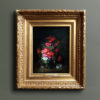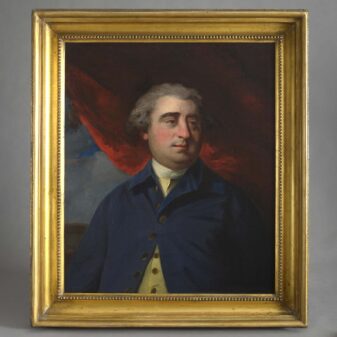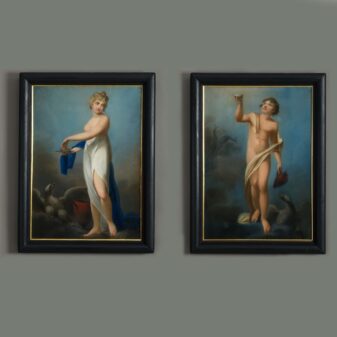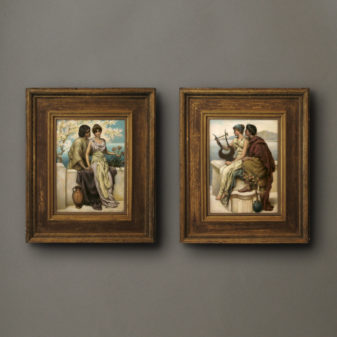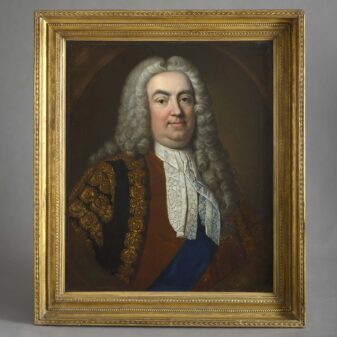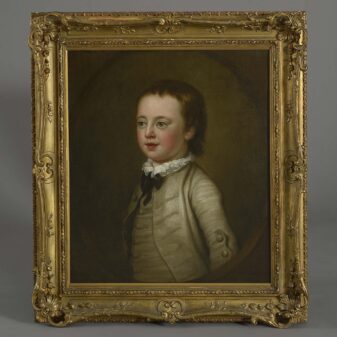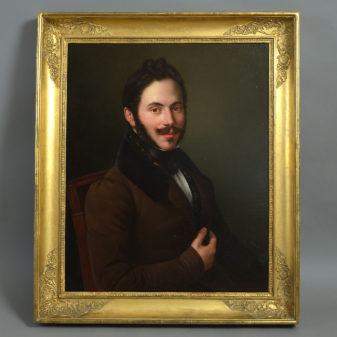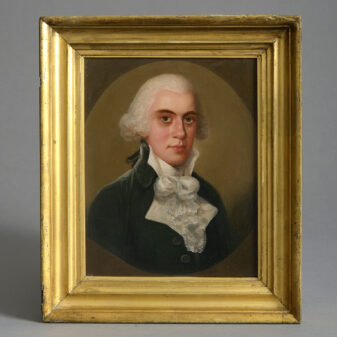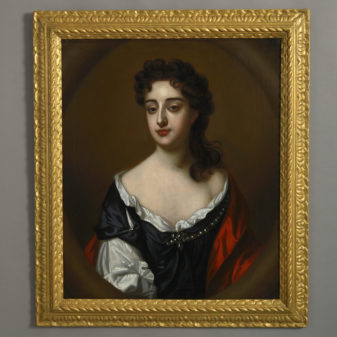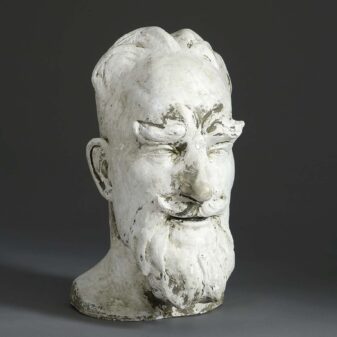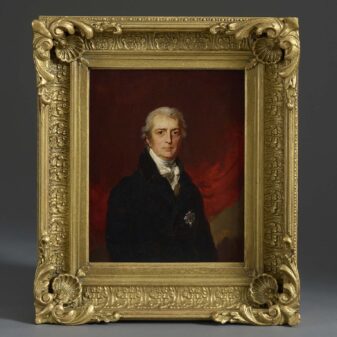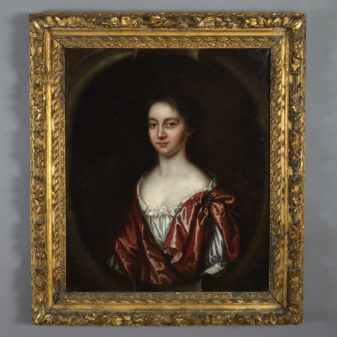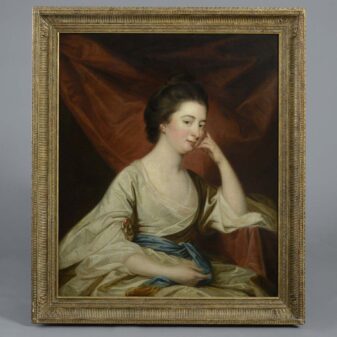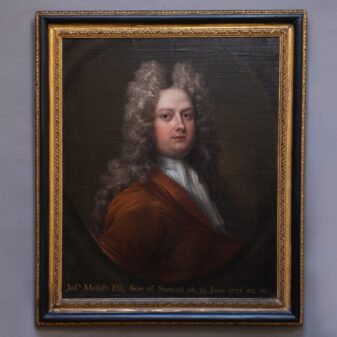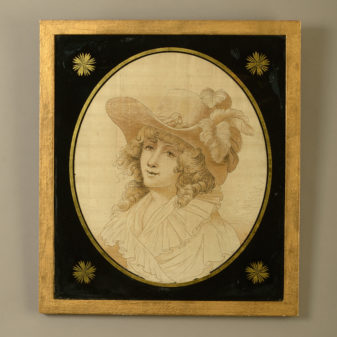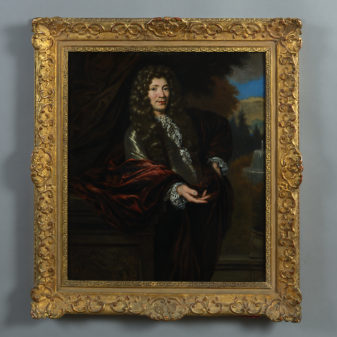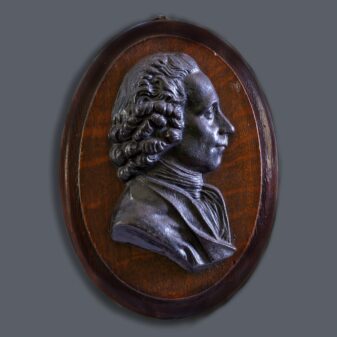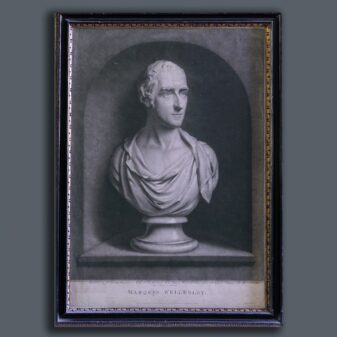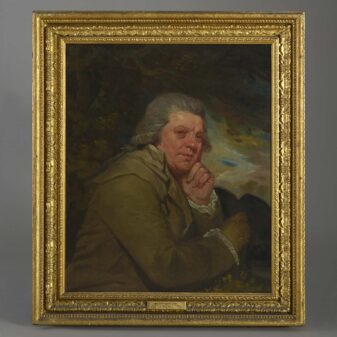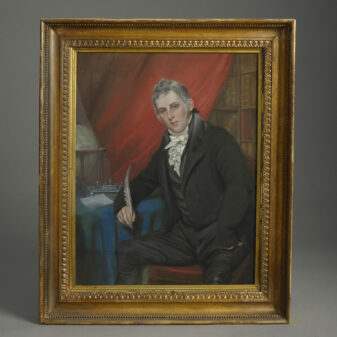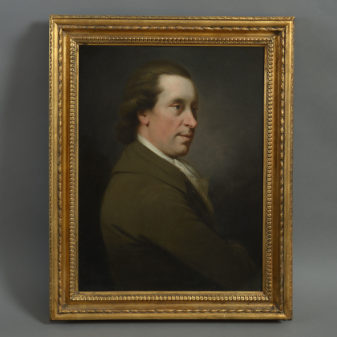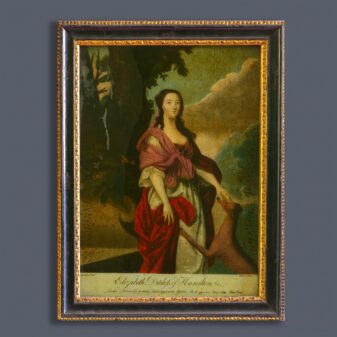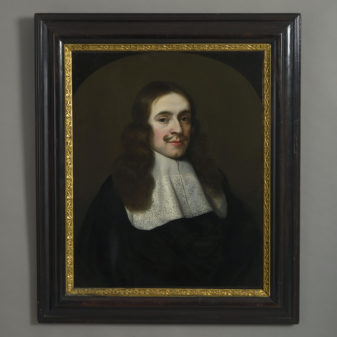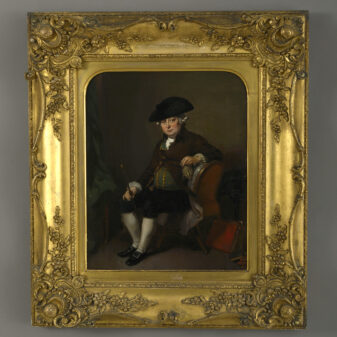Thomas Beach (1738-1806)
£5,500
SOLD
Sir Henry Dashwood Peyton (1736-1789)
Sir Henry Dashwood Peyton 1st Bt was the eldest son of George Dashwood (d.1762) and Margaret, daughter of Sir Sewster Peyton, 2nd Bt of Doddington Hall, Cambs. He married in December 1771 Frances (c.1751-1808), only child and heir of Sir John Rous, 5th Bt of Henham Hall Suffolk. He succeeded to the Peyton estates upon the death of his uncle in June 1771 and, in accordance with the injunction of his deceased uncle, assumed the surname and arms of Peyton. Through marriage the estates of his deceased father-in-law also devolved upon him, making him a man of some considerable fortune, with property and lands stretching across Cambridgeshire, Norfolk and Suffolk. As the original Peyton baronetcy had expired with his uncle he was newly created a baronet in September 1776.
In 1782 Peyton stood for Parliament on behalf of Cambridgeshire with the support of the Duke of Rutland and Lord Hardwicke and continued to represent that seat in the House of Commons until his death seven years later. He voted for parliamentary reform in 1783 and 1785 and was a supporter of the young William Pitt in his first administrations. Hardwicke wrote about him to Philip Yorke, the other county Member in May 1782, ‘Sir Henry Peyton dislikes many of the things we do, short Parliaments, new modes of election, etc … is no violent American, and shook his head about losing our authority in Ireland … I rather take Sir Henry to be a moderate Tory’.
This portrait dates from around this time, exhibiting all the finer qualities of Thomas Beach’s style from the earlier 1780s. It particularly shows the influence of his time with Joshua Reynolds, whose first assistant he became in 1760. Beach chooses to depict Peyton as an elegantly attired, man-about-town, rather than the country gentleman that he truly was, perhaps an indication that he sat for this portrait sometime after becoming an M.P. in 1782, conforming well to other known portraits completed at this time. The waistcoat alone, with the distinct pattern of green and white stripes, worn in this manner, is an indication of period, being the height of fashion from the early 1780s. The format also typifies the formula Beach had developed for half-length portraits by this time, placing the sitter in a feigned oval to the left and facing forwards to meet the gaze of the viewer. Though relatively simple compositionally, the portrait is sensitively handled, revealing a man with an intelligent face and kindly demeanor.
Born in Milton Abbas, Dorset in 1738, Beach became a pupil of Sir Joshua Reynolds in 1760 and about the same time enlisted as a student in the St.Martin’s Lane Academy. On leaving his master he established himself in Bath, where he gained employment and repute as a portrait painter. From Bath he sent portraits to the exhibitions of the Incorporated Society of Artists (1772-83) whose President he became in 1783. He first began exhibiting at the Royal Academy in 1785, contributing portraits yearly up to 1797 and appears to have maintained a presence in both London and Bath for the greater part of his career.
As with his master Reynolds his associations with his sitters was not necessarily confined to the professional side, being known to have entertained in Bath in 1781 with a musical gathering at his house. Here fine society mingled, with his portraits adorning the walls, all lit to advantage: ‘A fine light and shade being thrown upon the paintings, everyone found himself surrounded, as if by magic, by a number of his acquaintances, breathing in canvass…’ (Horace Walpole). No doubt Beach hoped that in such a beguiling atmosphere further introductions and commissions might be forthcoming. Certainly, a wealthy landowner and M.P. such as Peyton would have frequented regularly both Bath and London and it seems likely that this portrait was undertaken during the Bath season, which ran from October until the following May. Peyton’s wife had previously been painted by Gainsborough about ten years previously but by the early 1780s Beach was really the only portrait painter of note working in the city; the aging William Hoare effectively retired and the likes of Gainsborough, Wright of Derby and Robert Edge Pine having already departed, with the young Thomas Lawrence just starting to make a reputation with his pastels.
Works by Beach are to be found in many important collections including the National Portrait Gallery, London, the Royal Collection at Windsor Castle and the Walker Art Gallery, Liverpool.


